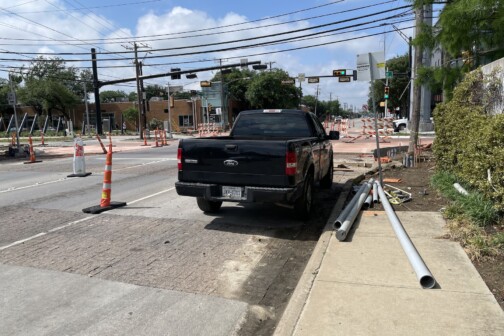The New York Times finds that on average urban living costs 18% less than its suburban compadre:
But the one big caveat in all the calculations is private schooling. If the city dwellers decide to send their children to private school — say when their children hit middle-school age — that expense would instantly make the suburbs a bargain.
Which is then supplemented by a senior level person at a brokerage firm who really offers no real analysis or insight beyond application of their own preferences, which makes you wonder what value does this person bring:
“At some point, the benefits of the city are not worth the things you need to give up,” said Jessica Buchman, a senior vice president at Corcoran, a New York real estate brokerage, for instance, when five people have to share one bathroom, or there’s no outside space.
As I’ve said over and over, it is about choice and meeting market demand. Truly urban places cost high for two primary reasons, the shear economic vitality raising salaries and the demand to be near that energy. If somebody’s job (such as Ms. Buchman’s) is to hinder or skew market perception or its ability to meet demand, then these are people you should be wary.
Speechless, I type to reiterate. I’m always flabbergasted at real estate professionals and experts who say people want one thing when price as dictated by supply and demand contradicts everything they say. This statement is NOT brought to you by the National Association of Realtors who want to remind you NOW is the BEST time to BUY. Please! Pretty Please! They’ll even toss in random sex acts.
—————segue—————-
Relatedly, two things pulled from the Patrick.net housing bubble mailing list:
Low mortgage rates scream now is NOT the time to buy, and
Yahoo Finance thinks housing could have as much as 50% more to fall.
I’ve been expecting a double dip for a while now if for no other reason than historical consistency and the human response to bear markets to beat the rush back to bullishness. Once that first wave fails to inspire necessary confidence in the market, back down the well it goes.
This has real world logic to it as well. The first fall could be very well attributed to too much fake money floating around in the system. Less money = less buyers and lower values. The next dip, which we haven’t fully seen a correction for yet is the over-abundance of supply in conjunction with being in the wrong areas.
As cities reposition inward, that has to cannibalize from somewhere. That somewhere will be at the edges and areas not well served by transit or of extremely high end homes that will be able to maintain the properties (if they choose to remain secluded — which is entirely possible if perhaps not probable).
——————-segue—————
Wall Street Journal picks up on the market demand for walkability:
A walkable neighborhood doesn’t necessarily have to be in the city center. And it doesn’t have to be more expensive. Eric Fredericks decided in September that, with the housing tax credit, it made more sense to buy than to keep renting. Planning on kids, he and his wife wanted a three-bedroom house in Sacramento, Calif. “We never considered living in suburbia,” he says. But they found a new development in a suburb called Rancho Cordova organized around a main street, with stores and restaurants. Their 2009 house is six inches away from the house next door and a couple of blocks from the town center. It cost $240,000, half what he says he would have paid for a comparable place downtown.
Included if only because I once worked on some strategic planning strategies for Rancho Cordova as a young pup shortly out of school.
The rest of the WSJ article is a kindergartner’s guide to the flaws inherent to WalkScore’s current valuation methodology. See here for much better analysis.
———————–segue——————
And lastly, Blair Kamin says to keep an open mind about pedestrian malling urban streets:
Clearly, there’s a hunger out there for better public spaces, especially in the city’s neighborhoods. With his ubiquitous median planters Mayor Richard Daley has given us beautiful streets, but the commenters also want livable streets—places where they can gather, socialize, and catch a break from the relentless two-dimensionality of computer screens and mobile phones.
Two contrasting issues with this. Pedestrian malls failed horribly in this country once already. But, it should also be noted why:
- Suburbanization had already begun. Policies too numerous to count here shipped people out of cities by the tens of percent of population.
- Because of this, density was not high enough to support pedestrian only places
- In some cases they were overly ambitious, closing too much down at once
- In other cases, transportation policy ensured the pedestrian only areas were isolated by barrier streets of intense automobile movement.
- Modernist design was often overly brutal, hard edged, inhuman, and theoretical if not ideological and therefore disconnected from our biological needs, preferences, tendencies, and sensibilities.
With that said, we are moving back towards the cities and temporary closures are proving very successful around the country. We have to be very cautious however, in our implementation of street closings. They should be phased incrementally in conjunction with increasing density and decreasing road capacity for cars. They should also be in areas that are easily accessible and prominent, rather than out of sight, out of mind (which is how some traffic engineers would prefer it). These areas then become dark alleys or “dead cat space.” Hardly revitalized.





